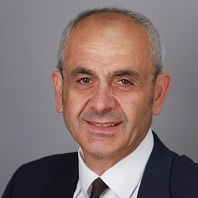Applications of Stem Cells in Cardiovascular Functional Genomics
A special issue of Cells (ISSN 2073-4409). This special issue belongs to the section "Stem Cells".
Deadline for manuscript submissions: closed (31 August 2021) | Viewed by 12834
Special Issue Editor
Interests: molecular genetics and genomics of stem cells; stem cell cardiovascular genomics; developmental/differentiation; toxicity gene signatures and pathways
Special Issues, Collections and Topics in MDPI journals
Special Issue Information
Dear Colleagues,
The regular development and maintenance of an intact cardiovascular system involves fine-tuned complex gene expression pathways which coordinate the development and function of the cardiovascular system. The field of cardiovascular functional genomics aims to identify the regular genes and signal transduction pathways in order to obtain a better understanding of the development and progress of cardiovascular diseases (CVDs). Because of the strict ethical aspects, to date functional genomics studies of the cardiovascular system have been executed using small animal studies. However, not all animal functional genomics studies can be transferred to humans. Moreover, even though animal studies have significantly contributed to the functional genomics of the cardiovascular system (CVS), these studies are very costly and time-consuming and cannot be executed in a high-throughput approach. Embryonic stem cells (ESCs) and recently induced pluripotent stem cells (iPSCs) have been shown to partly recapitulate embryonic development in vivo. Moreover, somatic cell derivatives from pluripotent stem cells (PSCs) (ESCs and iPSCs) in combination with advanced genomics technologies are applied to the discovery of disease-associated and cardiovascular toxicity gene networks involved in the development of CVDs. It is hoped that progress in this field will contribute to personalized medicine for developing better and novel therapeutic tools for the treatment of CVDs. The present topic is focused on the latest progress in functional genomics (including epigenomics) of the cardiovascular system based on the PSC model. Emphasis will also be placed on the question of how this emerging field will contribute to the discovery of novel mechanisms and pathways which are relevant to therapeutic applications of CVDs. In addition to original manuscripts, review manuscripts discussing limitations and advances of this field will be also considered for publication.
Prof. Agapios Sachinidis
Guest Editor
Manuscript Submission Information
Manuscripts should be submitted online at www.mdpi.com by registering and logging in to this website. Once you are registered, click here to go to the submission form. Manuscripts can be submitted until the deadline. All submissions that pass pre-check are peer-reviewed. Accepted papers will be published continuously in the journal (as soon as accepted) and will be listed together on the special issue website. Research articles, review articles as well as short communications are invited. For planned papers, a title and short abstract (about 100 words) can be sent to the Editorial Office for announcement on this website.
Submitted manuscripts should not have been published previously, nor be under consideration for publication elsewhere (except conference proceedings papers). All manuscripts are thoroughly refereed through a single-blind peer-review process. A guide for authors and other relevant information for submission of manuscripts is available on the Instructions for Authors page. Cells is an international peer-reviewed open access semimonthly journal published by MDPI.
Please visit the Instructions for Authors page before submitting a manuscript. The Article Processing Charge (APC) for publication in this open access journal is 2700 CHF (Swiss Francs). Submitted papers should be well formatted and use good English. Authors may use MDPI's English editing service prior to publication or during author revisions.
Keywords
- Pluripotent stem cells
- Functional genomic and epigenomics
- Signal transduction pathways
- Cardiovascular diseases
- Cardiovascular toxicity






